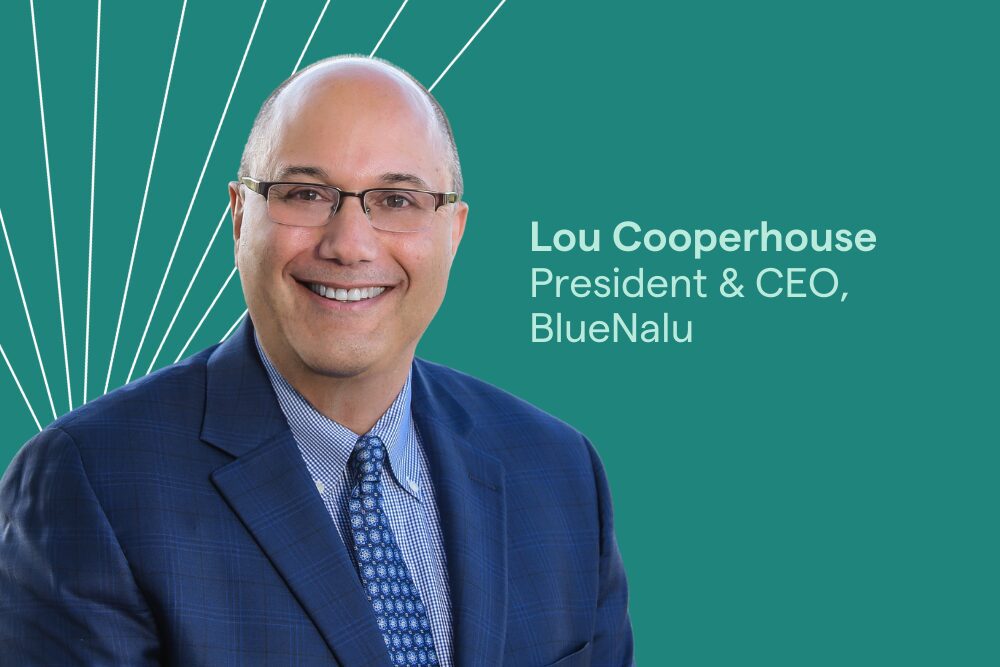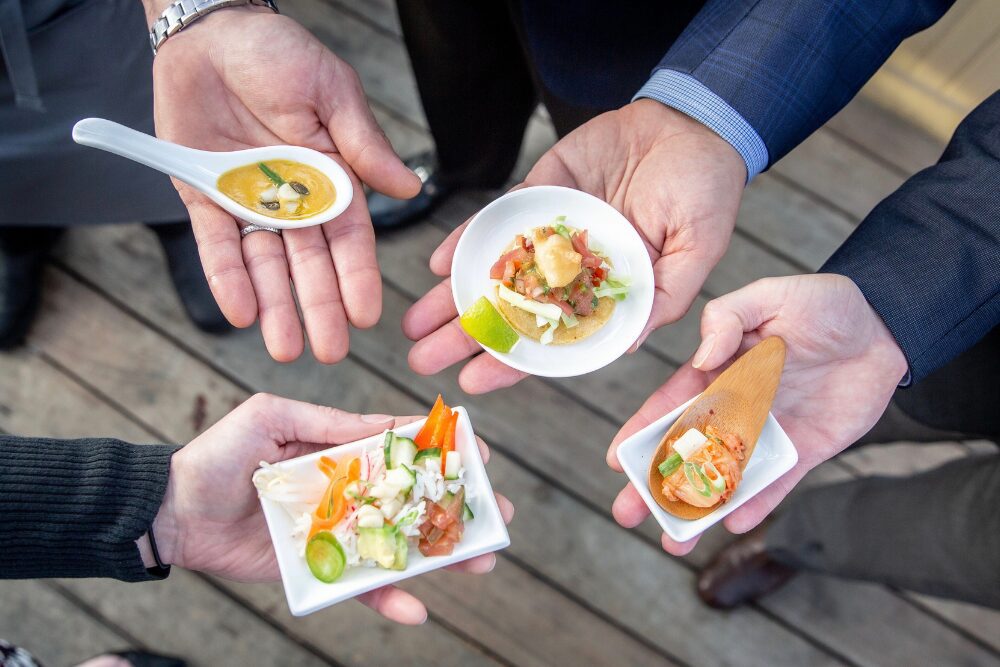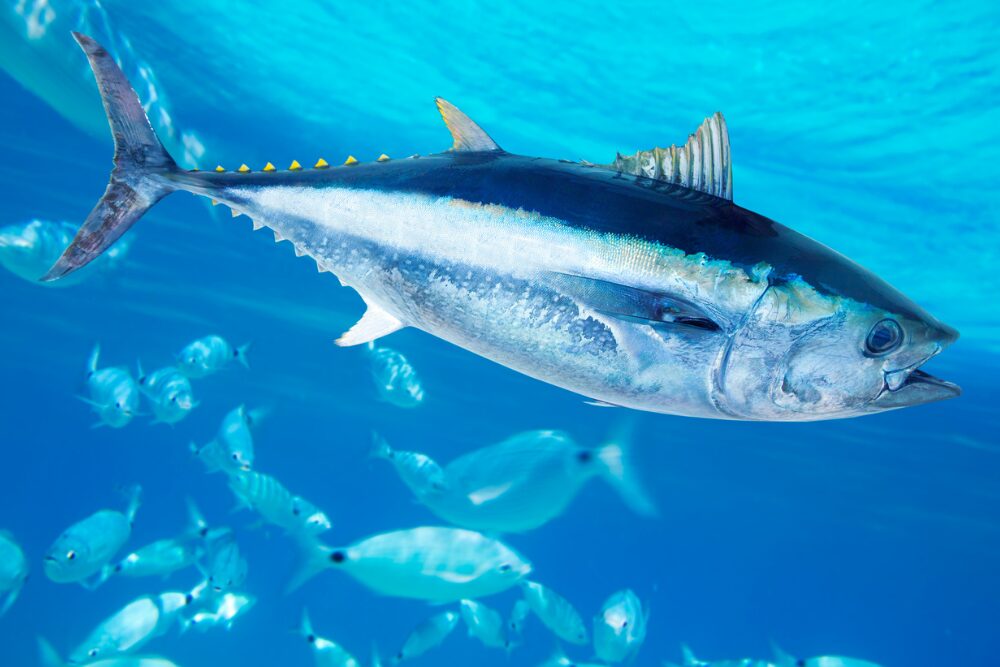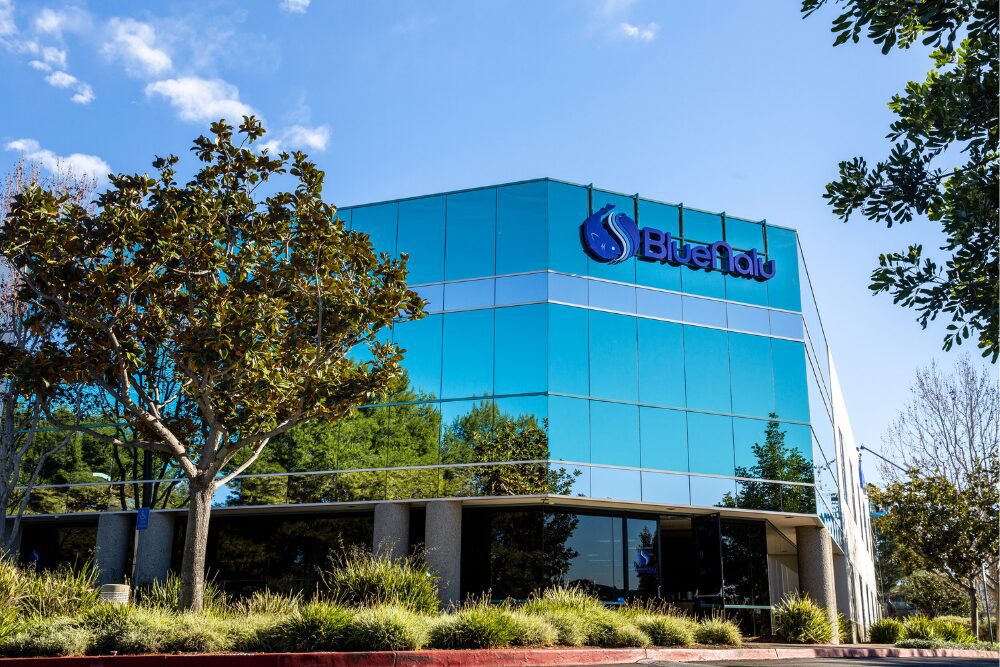April 30, 2022
Member Spotlight: BlueNalu

BlueNalu is Betting Big on Cell-Cultured Tuna to Save the Global Fish Supply
In celebration of Earth Day and this year’s theme, “Invest in Our Planet,” we interviewed Lou Cooperhouse, president and CEO of BlueNalu, a San Diego-based company that is pioneering cell-cultured seafood. More than one-third of the world’s fisheries are currently being overfished according to the United Nations Food and Agriculture Organization, and prized fish such as bluefin tuna have been in such short supply, even threatened with becoming endangered. Founded four years ago, BlueNalu developed a way to produce seafood directly from the cells of fish—specifically sushi-grade bluefin tuna—in hopes of providing a third option for consumers while conserving biodiversity in the ocean. The company aims to create a fully sustainable third seafood supply chain for restaurants, grocery stores, and consumers’ plates in the coming years. They’ve partnered with some of the world’s top seafood suppliers to bring cell-cultured seafood to Asia and Europe, and recently moved into a new 40,000-square-foot facility to further their R&D.
Why the focus on bluefin tuna? What other species, if any, do you plan to include in the portfolio of cell-cultured seafood in the future?
At BlueNalu we’ve adopted a thoughtful species selection model that focuses on species that are vulnerable, at high risk for mercury or other environmental pollutants, difficult or impossible to farm-raise, or those that are primarily imported. For our initial commercial product, we are focused specifically on bluefin tuna toro (the fatty belly portion)—the most premium cut of a globally prized species that not only commands premium value but is also loved around the world. We’re using biotechnology to develop our finished product, which is just the seafood people want to eat—no bones, no heads, no skin. Our products will demonstrate the same or even better characteristics as conventional seafood. Bluefin tuna is highly variable [in terms of fat content and quality] so another benefit we’re providing is consistent supply year-round. Our seafood solution also removes some of the guess work for restaurants, as our product will provide a high quality, consistent, delicious product every time with the same 100 percent yield. We’re able to give you the optimal culinary experience consistently—a delicious product, time and time again. Our platform technology allows us to produce a variety of species so we can meet consumer demand wherever we go to market. To be successful as a food company, we can’t just be ‘one and done.’ We’ve already demonstrated our ability to create a variety of finfish. This gives us confidence in our ability to create stable cell lines, from freshwater to saltwater fish, warm water-loving to cold water-loving [species]. In the future, we’ll be evaluating mollusks and crustaceans—the other two seafood categories that people love to consume.

Our ocean must receive more attention. It makes up two-thirds of our planet—the great majority of our biodiversity. 1 to 3 trillion fish are harvested each year—far more than any other animal, resulting in a very insecure, very vulnerable and very unstable supply chain.
Can you brief us on the process on how the fish are currently derived from cell cultures?
From an origin fish, we isolate up to three cell types: a muscle cell, a fat cell, or a connective tissue cell. We create the environment in which those cells can continue to double, perhaps hundreds and hundreds of times, creating a considerable amount of mass volume. Then we combine those cells to form a seafood product, like a filet or poke cube, that has the same nutritional profile as conventional fish.
Your company has noted that you are able to culture the cells without the use of FBS (fetal bovine serum). Why did you decide to not use FBS, and how did you create your own proprietary animal-free serum to replace it?
When this industry was born, it was an early objective for most companies creating food via cell culture to remove FBS and animal components from the media as it’s totally against what we’re all trying to accomplish. Animal-based ingredients have historically been used on the pharmaceutical side and are unsustainable and far too high in cost. As such, we’ve developed an extraordinary level of IP that allows for no external animal-based ingredients to be used in our process. One of our partners is Nutreco, which is one of the largest suppliers of aquaculture feed on the planet. They’re feeding fish amino acids, salts, sugars, lipids, vitamins, minerals—we’re doing the same thing. We’re not ‘feeding’ living fish, but living fish cells, and giving them what they need to help them thrive and divide. How we get these cells to grow is very tricky, because there’s no Fetal Bovine Serum or other things that might typically be found in the media. So, we found other things that enable their growth without any of these animal-based ingredients.

What have been your biggest challenges since founding the company?
When I started the company four years ago, we knew there were significant challenges that lay ahead. First, the technology. While there was past knowledge of mammalian cell-culture, there was none for the seafood sector; a total white-space. We’ve since overcome that hurdle and we now have all the foundational biology in place. Second? Regulatory challenges. When I started the company, no nation in the world had a regulatory process to approve this. Now, we’ve had discussions with regulators in multiple markets and continue to see increased interest from governments. In fact, the USDA and FDA are very engaged and proactive in understanding what will be required to enable food safety in this nascent category. Third, ingredient supply chain challenges. There previously wasn’t a supply chain of food-grade raw materials, which is currently being solved. The last big challenge is scale-up and commercialization. That will enable the real success and viability of this industry.
You’ve partnered with some of the world’s top ten seafood suppliers to bring cell-cultured seafood to Asia and Europe: Pulmuone in South Korea (prepacked-frozen foods), Food and Life Companies in Japan (the largest sushi operator that has 1,000-plus restaurants), and Nomad Foods in England. Why start there instead of the U.S.?
While we’re based out of San Diego, we consider ourselves a global company. There are so many different species that exist on our planet, which leads to immense variability in consumer interests and demand. Because of variable, vulnerable supply, the seafood industry today is a very fragmented sector—typically people consume what’s available. What we’ve done between Asia, the Americas, and Europe is say, ‘let’s learn about the customer.’ Part of our strategy is to leverage the knowledge of our partners to help us gain market intelligence about a seafood product, and the channels of distribution that are most appropriate. Our global partners are really helping us with both market intelligence and regulatory knowledge.

Do you anticipate consumers will embrace cell-cultured seafood?
Consumers are increasingly looking for products that are healthy for them and the planet without compromising on taste. BlueNalu has conducted quite a bit of consumer research in the U.S., and we have identified that our target market is people who love seafood! Seafood already enjoys a health halo, and when we share that our seafood will not contain antibiotics, mercury, microplastics or other contaminants, consumers are drawn to these benefits. We’ve also interviewed 75 chefs and foodservice operators who recognize that our product will provide consistent, 100 percent yield, year-round supply and eliminate the tremendous variability and unpredictability that exists in the seafood supply chain today. Both consumers and foodservice operators are excited to see seafood products that are healthy, humane, and sustainable. We have also received considerable interest abroad, through strategic partnerships, particularly in Asia where seafood consumption is the highest globally. Our cell-cultured seafood will provide a third option to complement wild-caught and farm-raised seafood, helping to alleviate stressors on wild fisheries and allow them to replenish. At the same time, we will be providing consumers the same great taste and nutritional composition as conventional seafood, but without the toxins, antibiotics and environmental pollutants.
What does Earth Day mean for you personally?
Earth Day is an extraordinarily important day for us. When I started the company, I was very excited to see that the UN came out with the 17 Sustainable Development Goals (SDGs) and that we aligned with quite a number of them, specifically, SDG 14—Life Below Water. While Earth Day signifies an opportunity to come together and celebrate our planet, we are aligned with the UN in embracing the SDGs and not just thinking about Earth Day as one day per year, but every day. Our ocean must receive more attention. It makes up two-thirds of our planet—the great majority of our biodiversity. One to 3 trillion fish are harvested each year—far more than any other animal, resulting in a very insecure, very vulnerable and very unstable supply chain. More people are eating fish than ever before. Why? They’re moving away from red meat toward fish because it’s healthier, and yet the contamination and lack of care for our ocean is resulting in increasingly unhealthy seafood due to microplastics and pollutants in our ocean ecosystems.
Why did you choose to be headquartered in San Diego?
I’ve done a fair amount of work in site selection and San Diego shined because of its workforce—not just because it’s an amazing place to live, with amazing sunshine every day. This is such a home for cell biology, tissue engineering, bioprocessing, an extraordinary level of innovation, and even a heritage in seafood. This was the ‘Tuna Capital of the World’ back in the thirties and forties. Bumblebee and Chicken of the Sea both had their roots here. It also has access to venture capital, and proximity to Asia. We are very proud to be in San Diego community. We hope that BlueNalu’s presence here will help make Southern California more of a powerhouse in food innovation.
